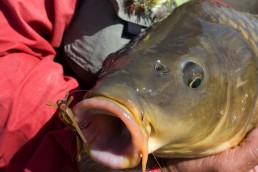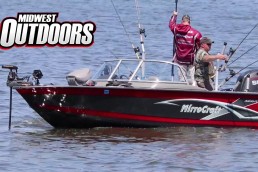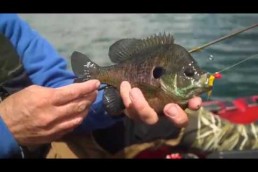Appreciating Carp Fishing: for their Fight and their Flavor
SHARE THIS POST
Who actually intentionally goes carp fishing? Myself and many others.
Why would anyone fish for carp? Well, first because they are one of the best “fighting fish” in inland waters. Second, there are many to use as food. In many European and Asian countries, carp are the number one gamefish. They’re also a well-liked food fish there. But it’s only here in the U.S. that carp and carp fishing are disdained as both a gamefish and a food fish.
First, let’s look at the fighting ability of carp. Other than sturgeon, I have fished for and caught virtually every species. I am an avid trout fisherman both with a fly rod and spinning rod, yet each spring you can find me attempting to catch carp. I say each spring because that’s when the flesh is the firmest and when they’re in the best condition for the uses I put them to. Another reason carp fishing is worthwhile is that when the water is cold they fight better than they do when the water warms up in summer.
EQUIPMENT
In the spring, I like to use ultra-light spinning or spincasting equipment. If you have never caught a 6- or 8-pound carp on an ultra-light rig, you have missed a great fight. I usually have an ultra-light rod from 6 to 8 feet. Match the reel to the rod and load the reel with 4- or 6-pound-test monofilament line. Tie on a number 4 or 6 hook, and you’re ready to go. If you’re where there is current or something else that will keep your bait from going to the bottom, you might need a sinker. I use a slip sinker so that there is no weight on the line when a carp takes the bait.
As far as bait goes, you can use worms, nightcrawlers or some others. Many times I will have two rods and throw out my baits for carp while I cast for other types of fish. I do have a collapsible rod holder that takes care of my carp rod. I never set the bail on my reel, just leaving it open so that the carp can run with the bait without pressure.
Many times when I am carp fishing and cast for other fish I’ll tie a small piece of colored thread just in front of the tip-top. If I’m busy when the carp takes the bait, I’ll then have something to go on. If I look back and the colored thread is gone, I know something is on the end of the line even though the line is not currently moving. At that point I will reel the line in slowly until I just feel pressure on it and then set the hook. If I’m watching the line and see it begin to move out I’ll wait until it stops before setting the hook. In other words, never set the hook until the carp stops. They seem to have a habit of barely mouthing the bait and running for a distance before totally inhaling it. Once the hook is set, it’s then all fun until you have him in your net or land him some other way.
Are you enjoying this post?
You can be among the first to get the latest info on where to go, what to use and how to use it!
CONSERVATION
Never throw the carp up onshore and leave it there. First of all, here in Wisconsin it’s against the law and is considered littering. If you’re caught you will be fined. Second, it makes an ugly sight and in a couple of days an even uglier smell. While you can throw him back in, most feel that once they have rid the water of a carp they do not want to put him back. This leaves you the option of taking it home.
If you are not going to eat it, the best thing to do is to use it for fertilizer for some tree or other plant on your property. If you have nowhere to use it, give it to a friend or neighbor who can. Remember, the Native Americans used fish and its parts to fertilize everything they planted. They even buried a small fish with each corn seed. While I use all of the entrails in the garden, my idea of what to do with spring carp is just to eat them.
COOKING CARP?
Now that we have the carp home and have decided to eat it in some way, how do we take care of it?
First, fillet it like you would do any other fish. Lay the two fillets down and you will see that there is a kind of a stripe running lengthwise through the center of each fillet. This is the mud vein, and is what gives carp their muddy taste. Cut through both sides of this mud vein and throw it away with the rest of the scrap. What you do next depends on how you want to prepare your carp.
You can actually fry it, but my favorite two ways is to either pickle them or smoke them. If you smoke them, just do it as you would when smoking anything else. When I pickle them, I cut the fillets into 1-inch chunks and use one of several pickling recipes that I know. Just go online and find one that sounds simple and try it. Another way to fix these is to can them in a pressure cooker and use them to make patties as you would for salmon.
For my “Incredible Carp Bait” recipe, take 1 cup of boiling water, 1 cup of flour, 2 cups cornmeal, 1 tablespoon sugar, 1 tablespoon of vanilla and 1 individual 3-ounce package of strawberry Jell-O. Add all ingredients into boiling water and stir until it is solid. Set it on the counter to cool. To use bait, take a small piece of it, roll it into a ball on the hook and you will catch carp.
There you have it—my reasons for carp fishing and what to do with them. Whether you intentionally try to catch this species or accidentally catch a couple, you should be ready for them on your line. They’re fun to catch and great eating.
MWO
SHARE THIS POST
Did you enjoy this post?
You can be among the first to get the latest info on where to go, what to use and how to use it!



